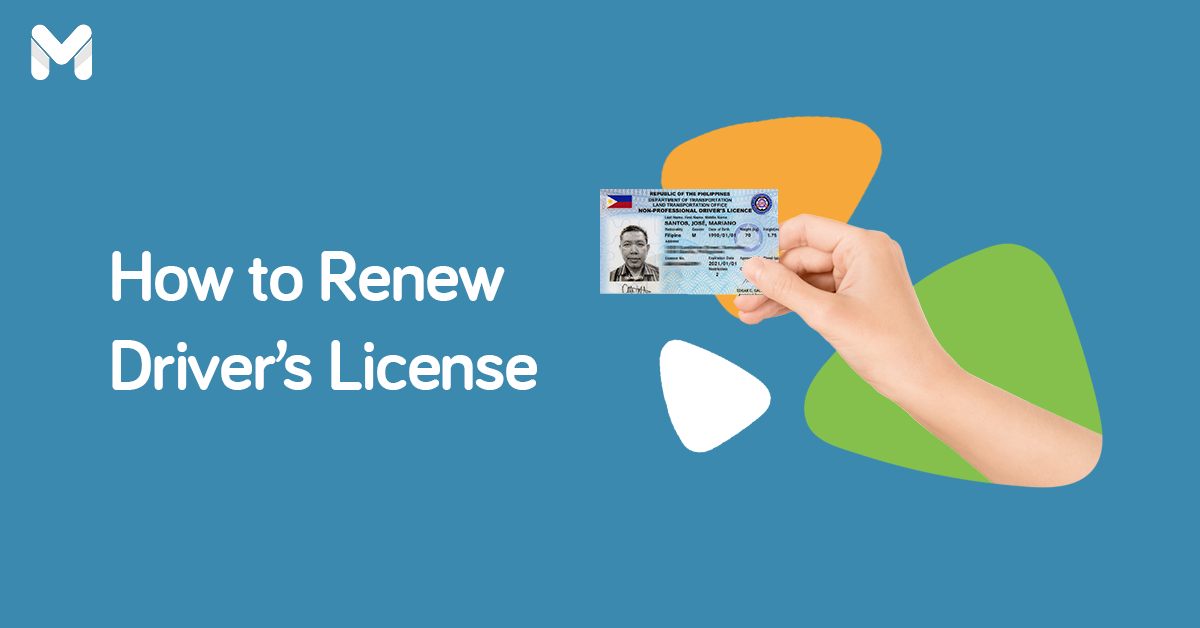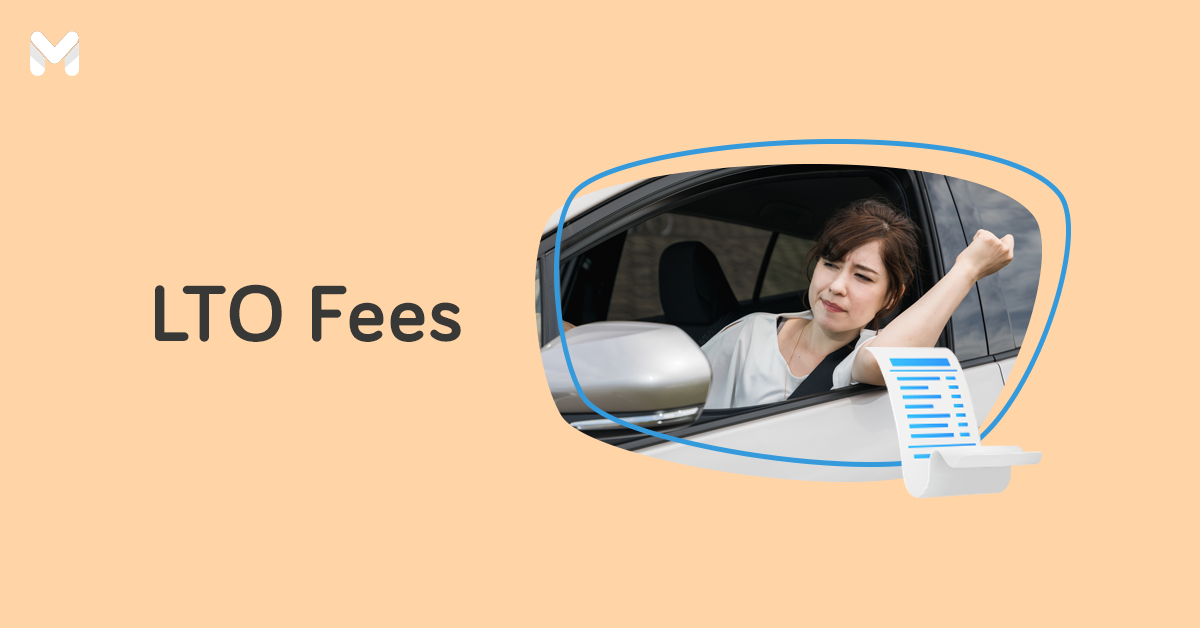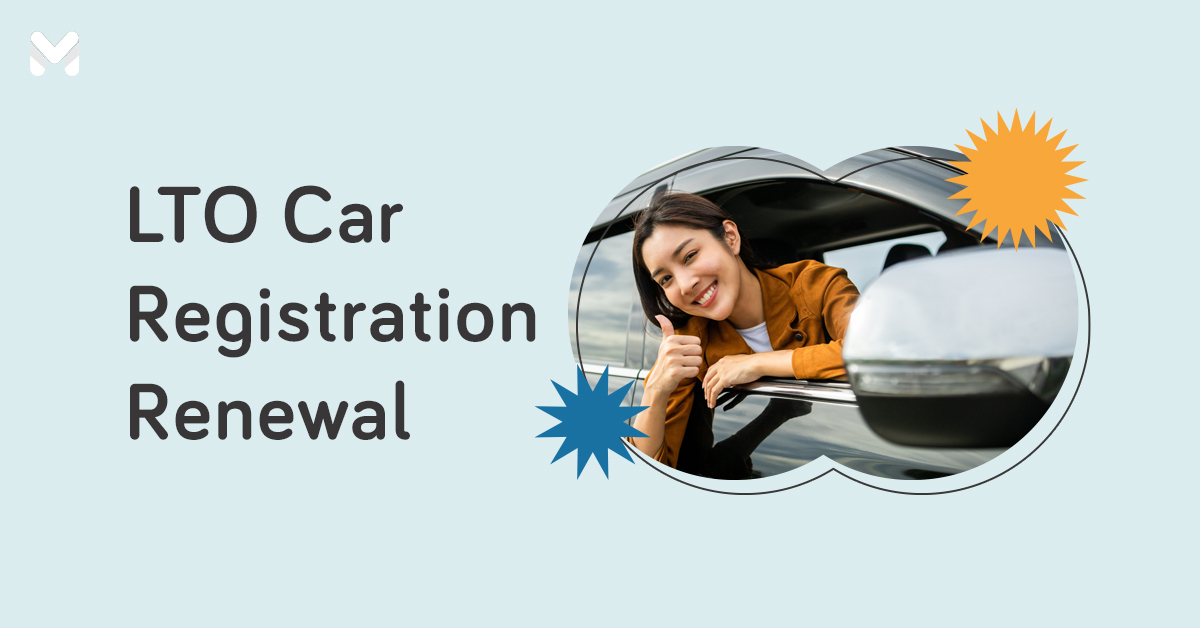Is the second-hand vehicle you either bought or sold already registered in the correct person’s name? If not, you have to make a transfer of car ownership immediately.
Updating your vehicle's ownership records with the Land Transportation Office (LTO) is among the first things you need to accomplish after selling or purchasing a used or repossessed unit.
Ideally, you shouldn’t drive a car or motorcycle in the Philippines if it's not under your name. Likewise, it would save you a ton of trouble down the road if you ensure that the ownership of a vehicle you used to have is properly transferred to the new owner.
Whether you recently sold your unit or purchased a used one, here's everything you must know about the LTO transfer of ownership of a vehicle in the Philippines.
Transferring Car Ownership: Why is It Important?
Processing your vehicle’s LTO transfer of ownership is just as important as registering your car with the LTO. It’s a shared responsibility between the buyer and seller that must be prioritized as soon as the sale has been finalized.
Transferring car ownership serves a purpose beyond simply notifying LTO of any changes in the ownership of a vehicle. With the Registered Owner Rule[1] in place in the Philippines, the LTO transfer of ownership ensures that any sense of responsibility or accountability associated with owning a certain vehicle is assigned to the correct person.
The Registered Owner Rule states that the registered owner of a vehicle is liable for any damage or injury caused while the vehicle is running on public roads or highways. This rule protects the public interest by simplifying the process of identifying who is accountable for any road mishap. Likewise, it stresses the urgency of immediately doing the paperwork for the LTO transfer of ownership.
LTO Transfer of Ownership Procedure in the Philippines
Below is a guide on how to transfer ownership of a vehicle in the Philippines. If you’re wondering if the process applies to all vehicle types, the answer is yes—motorcycles included.
1. Get a Clearance from the PNP-HPG
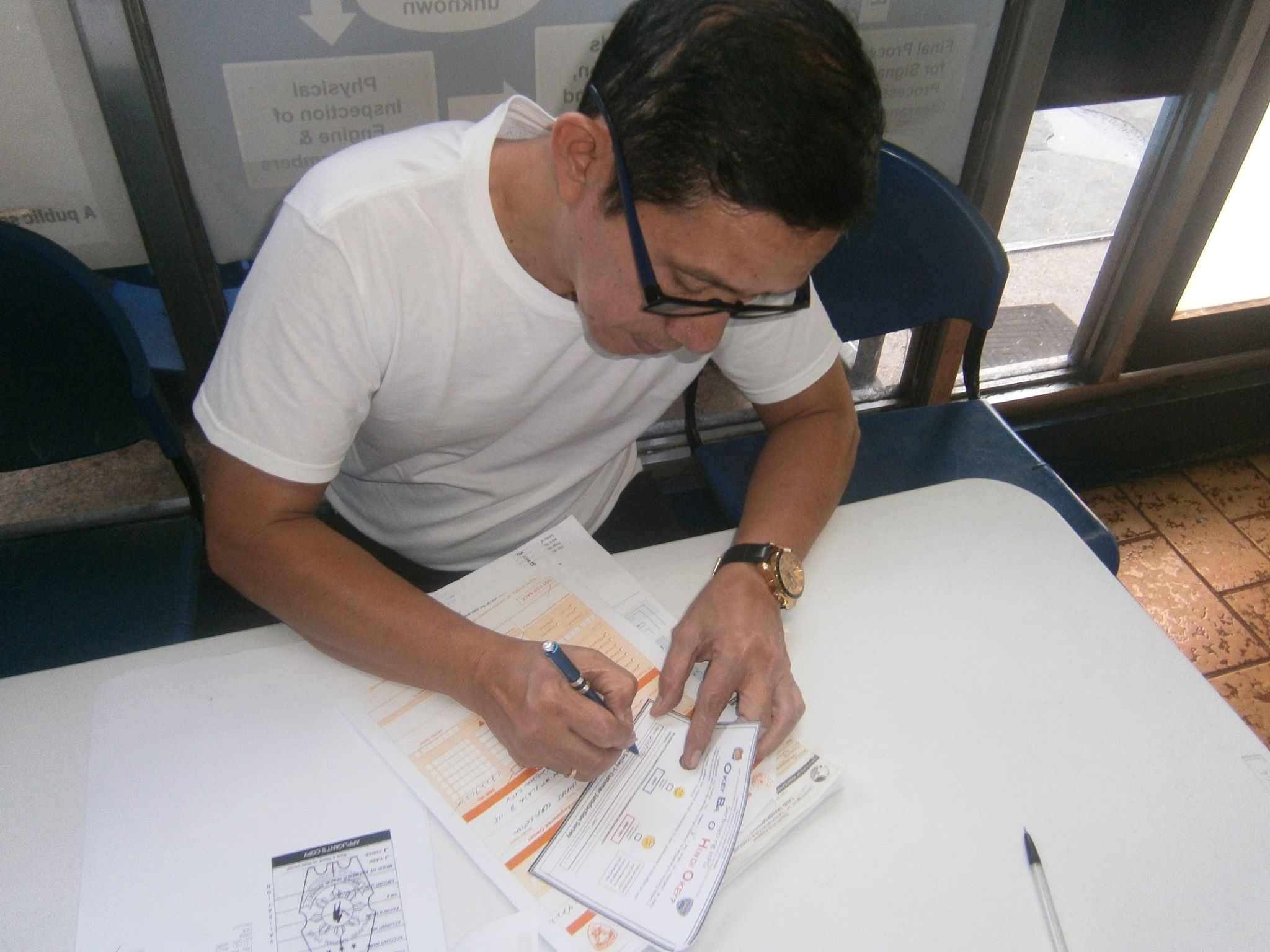
👉 What is Motor Vehicle Clearance Certificate?
A Motor Vehicle Clearance Certificate is an official document certifying that the vehicle is not on the list of wanted or stolen vehicles as of the issue date. The Philippine National Police - Highway Patrol Group (PNP-HPG) issues this certification.
A PNP-HPG clearance is an important requirement for LTO transfer of ownership. It's your proof to the authorities that the second-hand vehicle you're using has neither been carnapped nor used in a crime.
To confirm that, the PNP-HPG will inspect your car or motorcycle. Also, a representative from the HPG will verify your engine and chassis numbers through a process called stenciling or macro-etching. This verification uses a paint remover to check that the numbers are valid and not tampered with.
👉 Where Can I Get a PNP-HPG MV Clearance Certificate?
You can apply for a motor vehicle clearance at any PNP-HPG motor vehicle clearance satellite station. The office hours are from 8 a.m. to 5 p.m. (no noon break), Mondays to Fridays.
A few PNP-HPG satellite stations are located within the premises of LTO offices, which makes completing your transfer of motor vehicle ownership more convenient.
However, if you can easily access the PNP-HPG main headquarters in Camp Crame, Quezon City, it's better to apply for the MV clearance there. All LTO branches nationwide accept the certificate issued at Camp Crame. If you secure the PNP-HPG clearance for the transfer of ownership from a satellite station, you can only submit the certificate to the LTO branch in the same area of jurisdiction.
👉 What are the PNP-HPG Requirements for Motor Vehicle Clearance Certificate?
The following are the PNP-HPG requirements for the transfer of ownership. Motorists are required to submit an original copy and a photocopy of the following documents:
General Requirements for MV Clearance:
- Accomplished PNP Motor Vehicle Clearance Application Form[2]
- Notarized Deed of Sale or Writ of Execution from the court authorizing the transfer
- Two valid IDs of the original owner and the new owner (with photocopies attached to the Deed of Sale)
- LTO Certificate of Registration (CR) and Official Receipt (OR)
- Tax identification number (TIN) of the vehicle seller and buyer
- Physical Inspection Report or Macro-Etching Examination from HPG and Crime Lab (See the template here[3])
Additional Requirements for MV Clearance:
- Mortgaged vehicles: Cancellation/Release/Assumption of Chattel Mortgage from the Registry of Deeds (for car ownership transfer)
- Vehicles acquired from a company/corporation: Secretary's Certificate
- Vehicles from an insurance company: Certification from the insurance company that the vehicle was not declared a total loss/wrecked prior to the sale
- Vehicles sold through a representative: Special Power of Attorney (SPA)
- Vehicles whose transfer is being facilitated by another person, not the owner or not with SPA: Affidavit authorizing another person to facilitate the transfer of ownership on their behalf

👉 How to Get a Vehicle Clearance Certificate
- Drive to the nearest PNP-HPG MV Clearance Division.
- Submit the original and photocopies of the requirements at Window 1 or Receiving Station.
- The officer will review your documents. Once approved, an order of payment form will be issued to you.
- Go to the nearest LANDBANK branch to pay the clearance fee of ₱500 (₱300 for the transfer of ownership and ₱200 for the physical inspection). Photocopy the payment slip.
- Return to the HPG office and present the validated payment slip from the bank.
- Fill out the MVC application form and action slip that will be handed to you by the police officer.
- Proceed to the PNP Crime Laboratory or Motor Vehicle Inspection Area for the physical inspection and macro-etching examination of your vehicle.
- An official will take your photo together with your car or motorcycle and license plate.
- Receive your claim stub, which indicates the date when you can get your MV Clearance Certificate. Clearance processing usually takes one to three working days.
- Claim your vehicle clearance. Visit the PNP-HPG MV Clearance Division where you applied for the clearance and present your claim stub at the Releasing Section.
👉 Tips on Getting a Clearance from the HPG:
Instead of paying manually at the bank, you can pay for the MV clearance fee online via the LANDBANK Electronic Payment Portal (EPP).[4] Select Philippine National Police - Highway Patrol Group as the merchant name and Transfer of Ownership as the transaction type.
If the vehicle is registered at the LTO main office (meaning the mother file of the registration is at the East Avenue branch), you need to secure a certified true copy of the requirements at the LTO main before applying for the PNP vehicle clearance. This additional step is required by the PNP-HPG.
👉 How Long is the Validity of MV Clearance Certificate?
The Motor Vehicle Clearance Certificate is valid for seven working days only. Since it's one of the LTO requirements for the transfer of ownership, make sure to file your application at the LTO before your PNP clearance expires.
2. Prepare the LTO Requirements for the Transfer of Ownership

Before you start your vehicle transfer of ownership application, make sure to complete supporting documents to avoid going back and forth to the LTO office and other concerned agencies.
👉 Requirements for Transfer of Ownership for Private Cars and Motorcycles
Prepare the original copy and photocopy of the following documents:
| LTO Requirements for Transfer of Ownership | Where to Get the Document |
|---|---|
| Motor Vehicle Clearance Certificate, macro-etching report, special bank receipt, inspection form with direct stencil | PNP-HPG MV Clearance Division |
| Accomplished Motor Vehicle Inspection Report (MVIR) | Motor Vehicle Inspection Center (MVIC) at the LTO District Office or Extension Office, PNP Motor Vehicle Inspection Area |
| Insurance Certificate of Cover (COC) or Endorsement of insurance proving that the vehicle has an existing CTPL coverage | Any Insurance Commission-accredited insurance company |
| Certificate of Emission Compliance (CEC), if with renewal | Any Private Emission Testing Center (PETC)[5] accredited by the Department of Trade and Industry |
| Photocopy of valid IDs with the original owner’s and the new owner’s signatures | Issued by any government agency |
| LTO Certificate of Registration (CR) or Certificate of Registration Encumbered (CRE), Official Receipt (OR) | Original vehicle owner |
| Notarized Deed of Sale/Transfer/Conveyance | Original vehicle owner |
3. Apply for LTO Transfer of Ownership
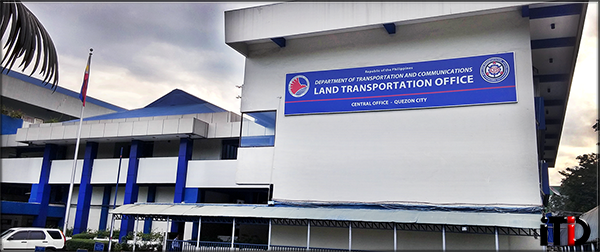
Once you have all the requirements for transfer of ownership, you can now file a request at the LTO branch where the car or motorcycle is originally registered. If the mother file of the CR is at the LTO main office in East Avenue, Quezon City, you can transfer the car registration at any LTO branch.
👉 LTO Transfer of Ownership Procedure
Here are the steps to take for your transfer of ownership application:
- Bring your car or motorcycle to the appropriate LTO office.
- Proceed to one of the transaction counters and submit all the vehicle transfer of ownership requirements for evaluation and computation of LTO fees.
- An authorized inspector will inspect your vehicle and conduct emissions testing.
- Proceed to the cashier, pay the fees, and receive your official receipt.
- If you’re a representative, proceed to the Releasing Counter. Present your OR and receive your Certificate of Registration, plates, and stickers.
👉 How Much are the Fees for LTO Transfer of Car Ownership in the Philippines?
Below are the fees you’ll pay at the LTO branch when processing the requirements:
| LTO Fees | Amount |
|---|---|
| Notarization (including typing fee) | ₱550 |
| Highway Patrol Group | ₱500 |
| Emission | ₱560 |
| Insurance | ₱550 |
| LTO registration | ₱371 |
| LTO transfer (Certificate of Registration) | ₱60 |
| Total | ₱2,591 |
LTO Transfer of Ownership FAQs

1. Who should apply for the LTO change of ownership?
No law specifically mandates who should request the transfer of ownership. Either the original or new owner may do it.
The Motorcycle Crime Prevention Act (Republic Act 11235)[6] requires original or new motorcycle owners to complete the transfer of ownership within five calendar days.
Also, the owners need to report the motorcycle sale to the LTO within five calendar days. This involves submitting a notarized Deed of Sale to the LTO office where the latest CR was issued.
But in most cases, the new owner handles the transfer of car ownership and coordinates with the previous owner to secure some of the required documents such as the valid ID, Deed of Sale, and CR.
No need for the previous owner to apply personally together with the new owner at the LTO for car title transfer.
2. How much does it cost to transfer car ownership in the Philippines?
For changing car registration to your name, expect to spend a total of ₱729.06 to ₱929.06 for the different fees charged by the PNP-HPG and LTO. Beware of scammers who’ll try to charge you a lot higher than that.
Here's the breakdown of car ownership transfer costs. This also applies to motor vehicle transfer of ownership.
| Transfer of Ownership Fees | Amount |
|---|---|
| Motor Vehicle Clearance processing fee | ₱500 (₱300 transfer of ownership fee + ₱200 physical inspection fee) |
| Computer fee | ₱169.06 |
| Legal Research Fund | ₱10 |
| Transaction fee | ₱50 |
| Penalty fee for late application (charged only if the deed of sale exceeds 30 days) | ₱200 |
| Total | ₱729.06 to ₱929.06 |
3. The original certificate of registration is lost/damaged. What should I do?
The registered owner should secure a notarized affidavit stating that the original CR is lost or damaged. Once the new owner gets a hold of this legal document, an application for duplicate CR/OR can be filed at the originating LTO office (where the mother file of the CR was first issued).
Aside from the affidavit of loss/mutilation, the LTO also requires two valid IDs of the registered car owner, the latest official receipt of registration payment, and an accomplished MVIR for the duplicate CR/OR application.
Note that it takes a while for the LTO to issue a replacement CR, as it first has to verify the original document. You can start the process of how to transfer car ownership in the Philippines only after receiving the duplicate or replacement CR/OR from the LTO.
4. Can I drive a motorcycle not registered in my name?
Yes, technically, you can drive a motorcycle that isn’t registered in your name as long as you’re a licensed rider. There’s no law prohibiting you from doing so, and it’s also not legally required for you to be accompanied by the registered owner.
However, keep in mind that there are risks to doing this—and one of them is that police officers may get suspicious of what you're using the motorbike for and prohibit you from passing checkpoints.
Moreover, the LTO warns that you may be required to present proof that the registered owner authorized you to use the motorcycle.[7] The authorization document should include a description of the vehicle, too.
If you don’t own the vehicle but use it all the time, it would be best to just figure out how to change or transfer the ownership of your motorcycle to save you any trouble and ease your anxiety every time you take it for a spin.
5. Can car ownership be transferred to surviving family members in the event of the registered owner’s death?
Yes. Upon the death of an individual, all their properties, including vehicles, become a part of what is called their “estate,” which is distributed among their legal heirs.[8]
One way to settle who gets what is through an extrajudicial settlement, wherein the heirs agree among themselves outside of court about what to do with the estate—or, in this case, the vehicle/s.
Once an agreement has been reached, the deed of the extrajudicial settlement is then publicly announced in a newspaper to give others ample opportunity to object to the settlement.
When no dissidents come forward, the transfer of ownership will then be processed upon the completion of the following documentary requirements:
- Original Certificate of Registration
- Original Deed of Extrajudicial Settlement of Estate (in case the deceased is survived by two or more heirs) or Affidavit of Sole Adjudication (in case the deceased is survived by only one heir)
- Affidavit of publication of the deed in any newspaper of general circulation for three consecutive weeks
In the case of a judicial settlement of the estate, the LTO requires the following documents:
- Original Certificate of Registration or Affidavit of Loss
- Certified True Copy of the Court Decision
If you find yourself in a situation like this, it’s best to hire a lawyer to help you settle your affairs.
6. What happens if I don't transfer car ownership?
The entire process of updating your car registration will take much of your time and involve a lot of paperwork, but you'll be in great trouble if you keep delaying it.
Here are the consequences of forgoing the transfer of car ownership in the Philippines:
❌ You'll Face Penalties
The punishment for failure to transfer ownership is hefty for motorcycle owners in the Philippines. Under Republic Act 11235 (better known as the “Doble Plaka” law), it can lead to a fine of ₱20,000 to ₱50,000, or a penalty of imprisonment of arresto mayor to prision correccional, as defined under the Revised Penal Code, or both.
There's also a penalty for a late application for transfer of ownership. You'll have to pay an additional ₱200 if you apply beyond 30 days from when the Deed of Sale was executed.
Read more: List of LTO Violations and Penalty Fees in the Philippines 2022
❌ You'll be Liable If Something Happens to the Car
If you're the original owner and the vehicle is still registered in your name, you are then responsible for any accident, traffic violation, or crime the car is involved in—even if you've already sold it.
Changing car ownership transfers responsibility from the original owner to the new owner. For your peace of mind, make sure that the car registration is under the name of the new owner.
❌ The Seller May Cancel the Contract
The seller or previous owner of the second-hand vehicle may file for cancellation of the contract of sale if the buyer fails to transfer car ownership. The sale of the vehicle may be canceled due to a breach of contract.
If that happens, the buyer must return the unit to the seller and even pay damages. The seller will also have to return the payment (minus the depreciation cost) to the buyer.
❌ Getting Car Insurance Could Become Difficult
If the used car you're trying to insure is not registered in your name, the insurance company likely won't approve your application.
Normally, car insurance providers require the car to be registered in the name of the policyholder. It's because the person who holds the title has what is called "insurable interest"—the motivation to protect the vehicle and keep it in good condition.
Ideally, your car registration and insurance policy are both under your name. This way, you won't run into problems should you need to make a claim.
Related articles:
- How to Use the LTO Portal: A Guide for Motorists in the Philippines
- Taking the Driver’s License Exam? Learn How to Get and Pass the LTO Exam in the Philippines
Final Thoughts
The process of LTO transfer of ownership is very challenging and time-consuming, what with the red tape you have to overcome. The numerous motorists swarming the PNP-HPG and LTO offices every day also further slow down the transaction and processing times.
Thus, it's important to manage your expectations. You have to be very patient when submitting your request for the transfer of ownership of your vehicle. If you can, ask a lot of questions about the specific requirements and procedures to the authorized personnel, so you won't have to waste time and effort during your application.
Get a Free Car Insurance Quote!
Looking for motor insurance in the Philippines? Below is a list of top car insurance companies and their features. Compare your options and get a free quote from Moneymax!
| Car Insurance Company | Maximum Total Sum Insured | CTPL Coverage | Own Damage & Theft Coverage | Acts of Nature Coverage | Death / Disablement Coverage |
|
FPG Insurance
|
₱4 million
|
✔️
|
✔️
|
✔️
|
|
|
Malayan Insurance
|
₱7.5 million
|
✔️
|
✔️
|
✔️
|
|
|
The Mercantile Insurance Corporation
|
₱5 million
|
✔️
|
✔️
|
||
|
OONA Insurance (formerly MAPFRE)
 |
₱5 million
|
✔️
|
✔️
|
✔️
|
✔️
|
|
PGA Insurance
 |
₱3 million
|
✔️
|
|||
|
SGI Philippines
|
₱5 million
|
✔️
|
✔️
|
✔️
|
|
|
Standard Insurance
|
₱5 million
|
✔️
|
✔️
|
✔️
|
✔️
|
|
Stronghold Insurance
|
₱3 million
|
✔️
|
Sources:
- [1] Registered owner rule (Acosta, The Manila Times, 2021)
- [2] PNP Motor Vehicle Clearance Application Form (20th Ave., HPG Motor Vehicle Clearance Satellite Station Facebook page)
- [3] Forensic Request Formats (PNP website)
- [4] LANDBANK Electronic Payment Portal
- [5] Accredited Private Emission Testing Centers (DTI website)
- [6] Republic Act 11235 (Official Gazette)
- [7] Riding someone else's motorcycle? Be ready to prove you're not a criminal (Philstar, 2020)
- [8] How to transfer car ownership in case of the registered owner’s death (TopGear, 2022)







